Year - 2024
Departure Date - sep 29
Return Date - oct 5
This Tour Is Open -
Tour Type - tourist/railfan
$2,295 - Double Room Occupancy
$449 - Single Room Supplement
none - Deposit To Hold Space
-$500 - receive a Discount -
book by august 15, 2024
Full Payment Due at time of booking
Tour Includes:
6 breakfasts
fully escorted
heritage alco diesels
open window coaches
freight only railroad lines
private charter train each day
many off train culture options
four persons to each compartment
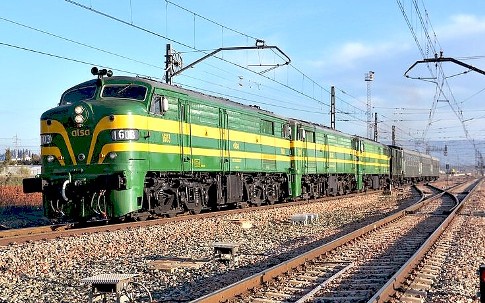
three of the classic alco class 316 pull a train in spain
We invite you to come join us for our charter train through eastern Spain pulled by the rare Class 316 and 321 Alcos. Our train will travel to the Catalonia region with the classic 1960's passenger cars with windows that open for some great photography. We will travel over some freight only lines which will be pulled out of service soon. This tour will offer some spectacular scenery and magnificent railway infrastructure.We will travel 2,000 miles through the Spanish countryside We will cater to both the railfans and their wives on this tour. Focus will be not only on the trains for the rail enthusiasts but on the local culture. Each day we will have options for the enthusiasts and the folks who enjoy the culture. This tour will not be repeated. Reserve now and receive a $500 discount!In the early 1950s, within the context of US aid to Spain, in 1953 three locomotives of the DL-500 model arrived in Spain, destined to work on the construction of the NATO base in Rota. At that time, the Americans loaned one of these locomotives for six months to RENFE, which was interested in starting the use of diesel locomotives for regular services. After successful tests in the Andalusia area, RENFE decided to order fourteen ALCO locomotives, which would became the 1600(316) series. These locomotives were an adaptation of the Alco DL-500 model, known as the world locomotive used in many countries, but with some modifications. In the mid 1990's RENFE sold these units to private companies. Now the railroad has bought them back and put them into mainline service once again.
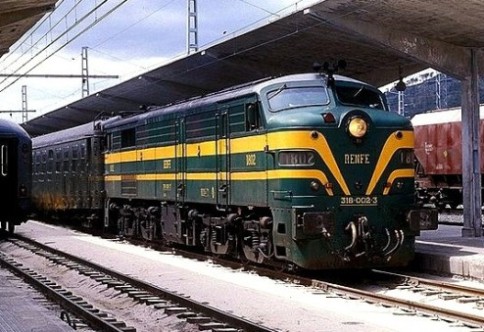
the classic cab unit alco class 316 in fresh alsa paint
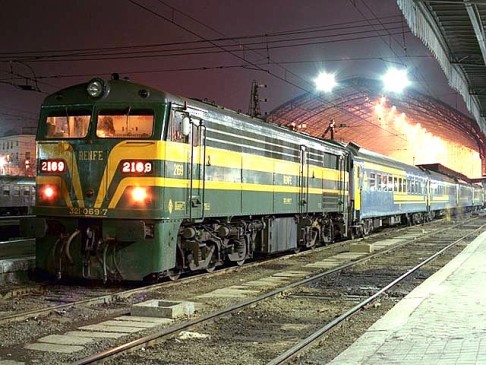
during our tour half of the time the alco class 321
will be in the lead
Upon arrival in Madrid. If you arrive earlier in the day we will visit the Arganda Train. This railroad is vintage steam hauled train that makes a journey of almost 3 miles along the only preserved section of the old, narrow gauge, Tajuña Railway. The Arganda Train is managed by the non-profit association "Centro de Iniciativas Ferroviarias Vapor Madrid" (CIFVM). The train is made up of wooden cars, some of which are already a hundred years old. Our charter train will cover all of the track available and will be pulled by steam and diesels including a short spur into their depot and workshop.
🍽 breakfast
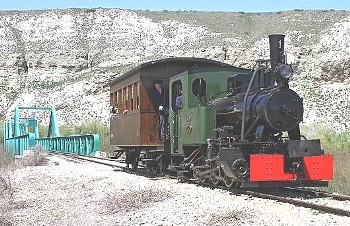
the arganda railroad train
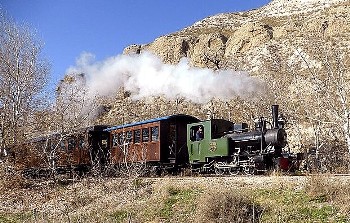
the arganda railroad train
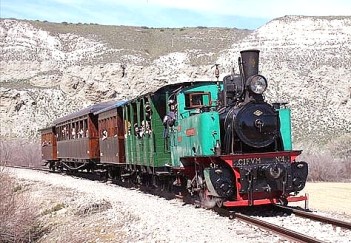
the arganda railroad train
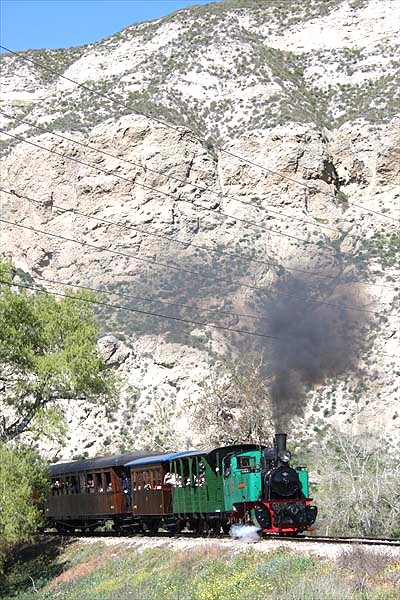
the arganda railroad train
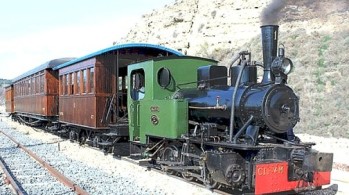
the arganda railroad train
This morning we join our private charter train formed of 4 compartment carriages from the 1960s with opening windows, now owned by ALSA, and hauled by two ALCO diesel locomotives also from the 1960s. Our train will take us up the Madrid to Irún line. It is not long before we are crossing the Sierra de Gradarrama mountains and we pass close to the city of Segovia. Crossing the central plains, we pass the city of Valladolid and into the scenic Castile de León region. After Palencia we pass through Burgos, one of the main stops of Camino de Santiago pilgrim route, preserves major signs of its medieval splendor. At Miranda de Ebro we are on the borders of the Rioja wine region and we head north east into the Basque country. At Altsasu we branch off north via the foothills of the Pyrenees and through the coastal city of San Sebastian to the border with France at Irun.
After our night in Hendaye we travel on the narrow-gauge line along the coast to San Sebastian. After around 4 hours for lunch we join the ALSA charter train at San Sebastian station. San Sebastián or “Donostia”, as it is called in the Basque language, is definitely among the most beautiful cities of Spain. The Old Town is an ideal place to go for a walk and is known for having the highest concentration of bars in the world. It is formed by narrow streets located at the foot of the Mount Urgull.
The special train will head back to the junction at Altsasu to reverse and head east to Pamplona for our overnight stay. Pamplona sits on the fertile plain of the river Arga, a city full of history and deep-rooted traditions. The streets and squares of its historic quarter still preserve a significant collection of monumental buildings dominated by its churches and medieval walls. In the north are the Pyrenees mountains clearly visible from the city.
🍽 breakfast
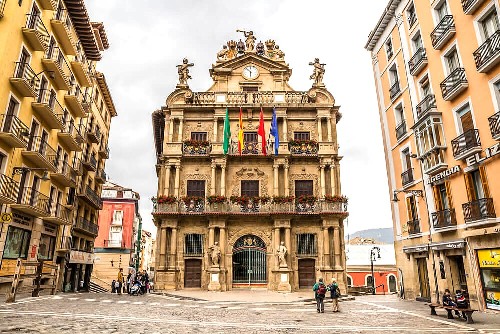
city of pamplona with the pyrenees mountains
on the border with france.
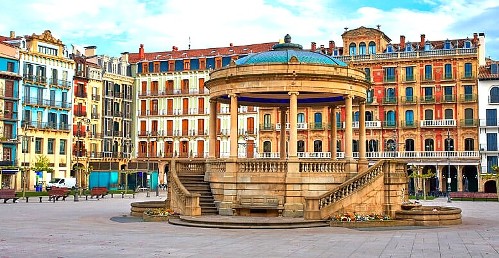
city of pamplona with the pyrenees mountains
on the border with france.
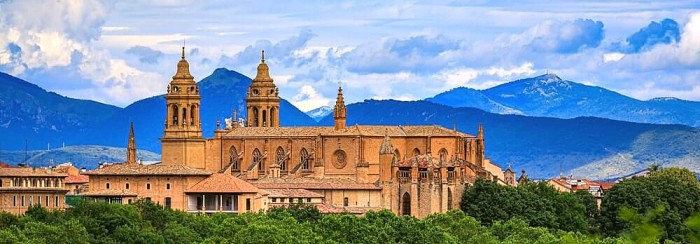
city of pamplona with the pyrenees mountains on the border with france.
Leaving Pamplona we head south along the original Iberia gauge line to the junction at Castejon de Ebro. A high speed, standard gauge line, is already under construction here but we will take the original line which will be closed once construction is complete. We are now in the Ebro river valley which we follow south east to the important city of Zaragoza. While here our train will traverse all the old Iberia gauge lines in the area. There are already a series of high speed standard gauge lines here and no doubt some of these Iberia gauge lines will lose passenger services in the future.
There is the culture option of alighting here to spend some time in this city where ancient and modern mingle in a captivating way. As the capital of Roman Spain, it boasts impressive monuments such as the amphitheatre, the circus, and the walls, which are UNESCO World Heritage Sites. You can explore the rich history of Tarragona through its museums, routes, and festivals, or enjoy the lively atmosphere of its bars, restaurants, and markets. Tarragona is also a gateway to the Costa Daurada, a stunning stretch of golden beaches and charming towns. Overnight in Tarragona.
Those wanting to continue on the special train (into the evening) we leave Tarragona and follow the coast up to Sant Vince de Calders (culture people won’t miss this stretch as we travel along it again tomorrow). We now take the old Iberia gauge country line north west to the large town of Lleida. There is already a high speed line between the two cities so not sure how much future the old line has. At Lleira we reverse and retrace our steps to the junction at La Plana-Picamoixons and take the line south the Reus. We then return to Tarragona via Vila Seca. Overnight in Tarragona.
🍽 breakfast
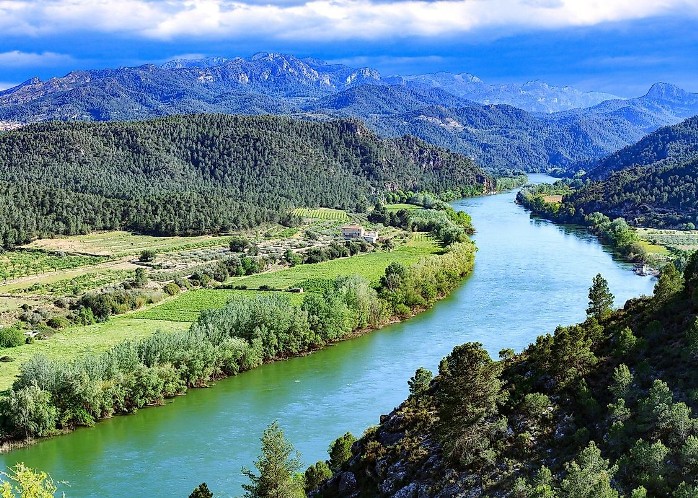
our charter train will run through the scenic ebro river valley
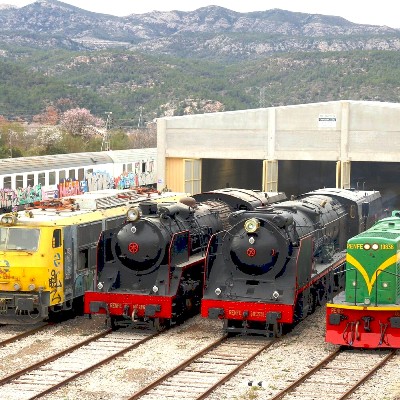
classic mora la nova railway museum
with steam and diesel
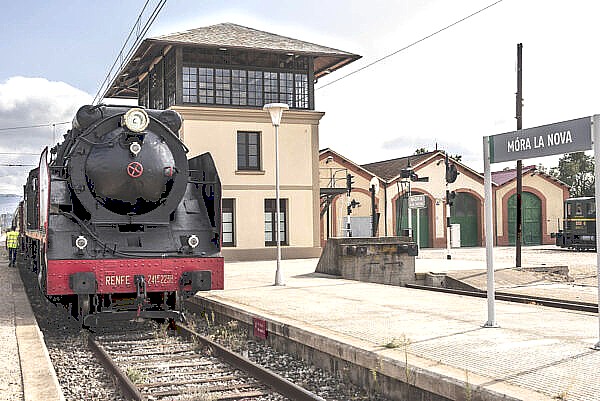
classic mora la nova railway museum with steam and diesel
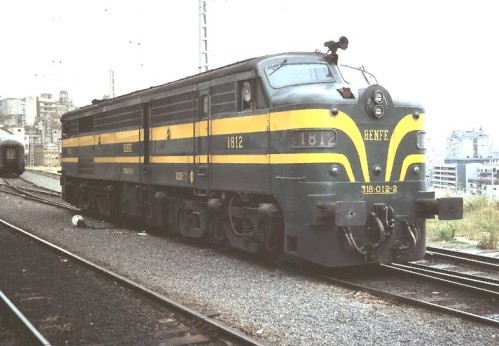
the classic alco class 316 shipped to spain in 1953
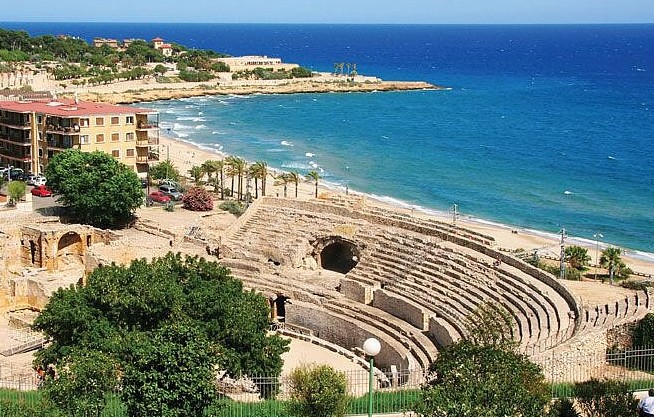
costal city of tarragona
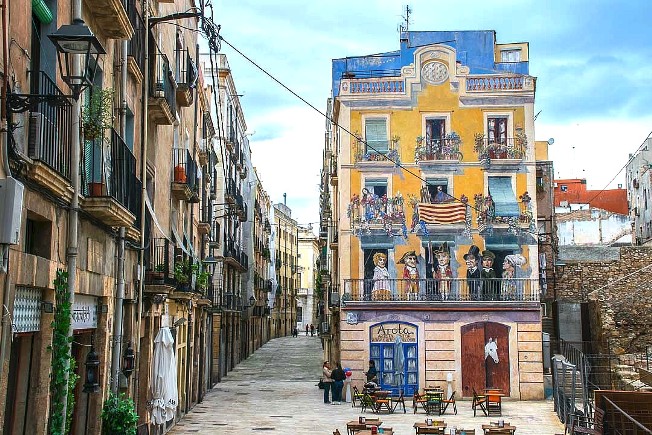
costal city of tarragona
Outside of Tarragona there is already a high-speed line to Barcelona, but we will, of course, stay to the old routes. First we take the coastal line, via Sant Vicenc de Calders then via Castellbisbal and L’hospitalet de Llobregat to arrive into Barcelona Sants station. Culture group will leave the train here (see below). Leaving Sants we head north to the French border at Portbou via the inland route via Granollers-Center and Macanet-Massanes. Again, most of this route now has a high speed equivalent so no idea how much of the old route has a long term future. After reversing at the border we return to Macanet-Massanes and take the coastal route back, via Mataro. Culture group rejoin the special train at Barcelona Est de Franca. We now cover some more of the urban routes (as below) including some rare lines before heading back to Tarragona for our second night in this city.
Our route in more detail is Sants – Arc de Triomf – El Clot – Granollers-Centre – Portbou – Macanet-Massanes – Mataro – Bif. Glories-Clot – Barcelona Est de Franca – Bif. Glories-Clot – El Clot – Bif. Aigues – Montcada-Bifurcacio – Manresa – Montcada-Bifurcacio – Cerdanyola del Valles – Cerdanyola Universitat – Rubi can Vallhonrat – Castellbisbal-Agujas Llobregat Castellbisbal-Agujas Molins – L’hospitalet de Llobregat Belvitge Aguja – El Prat de llobregat – Sant Vicenc de Calders and back to Tarragona for our overnight stay. Route includes the freight only line from Rubi to Bif.Rubi. Culture group will have a few hours in Barcelona with time to visit Sagrada Família.
🍽 breakfast
he culture group will first spend the day visiting the wonderful towns of Reus and Tortosa (see below). The enthusiasts will have an early start and return on the special train to cover the remaining lines in the Barcelona area. Route being Tarragona – Sant Vincenc de Calders – Castellbisbal-Aguja Molins – Barcelona Morrot – Castellbisbal-Aguja Molins - Castellbisbal-Aguas LLobregat – Cerdanyola Universitat – Cerdanyola del Valles – Montcada-Bifurcacio - Cerdanyola del Valles – Cerdanyola Universitat – Rubi Can Vallhonrat - Castellbisbal-Aguas LLobregat - Sant Vincenc de Calders – Tarragona. A highlight is the freight only line to Barcelona Morrot Freight Terminal. Also includes the freight only line from Bif. Rubi to Bif.Papiol.
We then head back down the coast and take the branch line to Tortosa. We hope to have a break here. Culture group rejoin the special train. We all then return down the branch line and back to the coastal mainline and head south to reach city of Valencia (Nord station). Option to leave the train here for an earlier finish before the train reverses and head to Silla and takes the branch line to the coast and terminating at Gandia. After reversing we return to Valencia for our overnight stay.
Reus is not only the birthplace of Gaudí and one of the most culturally active towns in Catalonia. Visitors can start their walk at Prim square, where the beautiful Fortuny theater is found, and then walk down Monterols street to Plaza del Mercadal, where they will see Casa Navàs, a modernist jewel designed by Doménech i Montaner, which still has the original, coffered ceilings and lamps of the period. Gaudí Center is also located here. From the Mercadal, continuing along Carrer Major, visitors will reach the Reading Center, a popular athenaeum with a valuable library and interesting works of art. The Gothic church in Sant Pere square dates back to the 16th century, with its impressive octagonal bell tower from which you can see the entire Costa Daurada. Two of the most important of Reus's museums are Salvador Vilaseca archaeology museum and the Regional History Museum. If you are interested in Gaudí, you can take a route around Reus to visit the house where he was born or the church where he was baptised, with the last stop at Gaudí Center: 1,200 square metres of exhibition dedicated to his work.
Tortosa preserves significant examples of medieval, Renaissance, baroque and modernist architecture. It has been declared to be Historic-Artistic Heritage and some of its buildings, such as the castle of La Suda, are National Monuments. The city is located near the mouth of the river Ebro and the first thing to attract attention is the Arab castle of La Suda, perched on a hill. Visitors can stay there if they wish since it has been converted into a Parador de Turismo hotel. Near the river is the old part of town, with its 14th-century Gothic Cathedral with a baroque façade, three naves and a cloister, outstanding inside which is the richly-colored high reredos, from the 14th century; and the reredos of the Transfiguration, from the 15th century, as well as the chapel of La Cinta, from the 18th century, with Italian marble and jasper from Tortosa. Visitors can also admire the Episcopal Palace, built in the 14th century, with a courtyard, gallery and an outstanding stairway, while inside there is a chapel from 1316, with a multicoloured stone door and sculpture from the 14th century.
🍽 breakfast
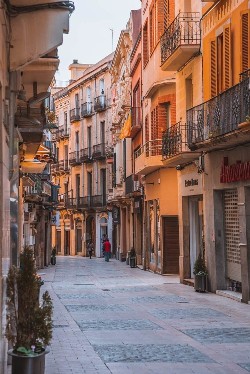
the narrow streets of
colorful reus, spain
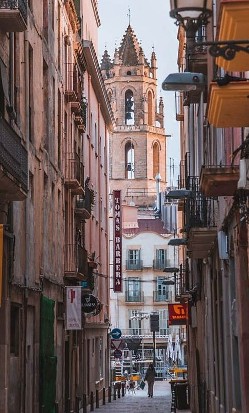
the narrow streets of
colorful reus, spain
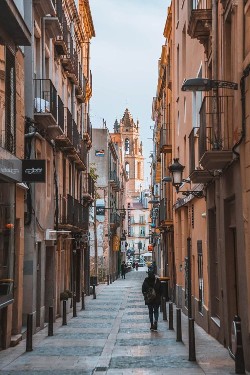
the narrow streets of
colorful reus, spain
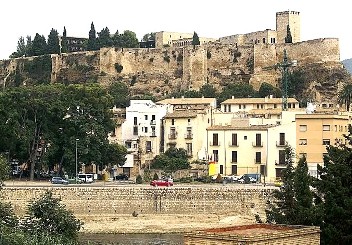
meddieval city of tortosa
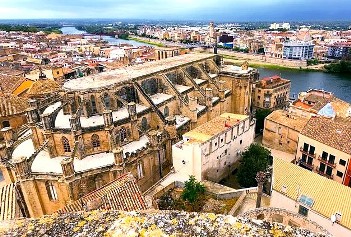
meddieval city of tortosa
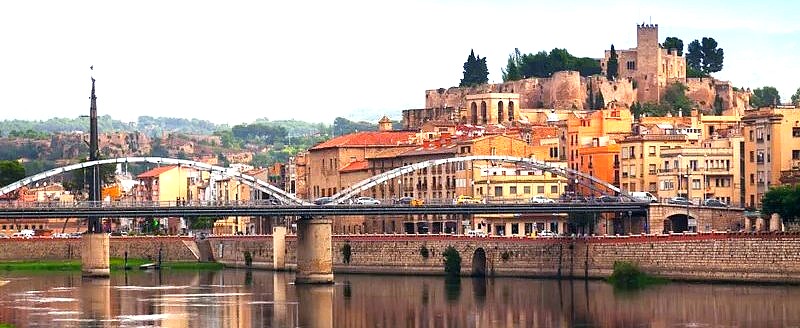
meddieval city of tortosa
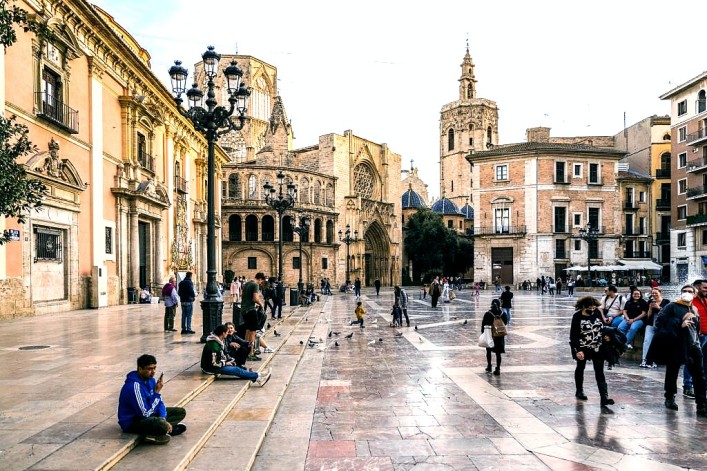
the streets of valencia
Final day of our special train and we board at Valencia Nord. It is likely to be an early start so for the culture group we will have the morning free and take the 11:43 service train to meet up with the special train at Xativa. The enthusiasts on the main train will head south along the coast to Xativa and take the branch line to Alcoi. After reversing the train returns to Xativa (culture group join here). We then head west along the main line to Madrid. At Villaverde Bajo we have permission to travel on the 3 mile freight only line to Vallecas-Industial. We then return to the junction at Vicalvaro and visit Vicalvaro-Mercancias and O’Donnell. We then end the day back at Madrid Chamartin. We take the local train to the airport for our overnight stay.
🍽 breakfast
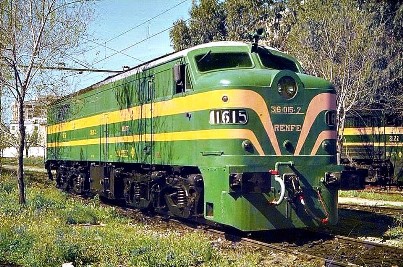
the classic look of an alco cab unit
will pull our train for part of our journey
After breakfast (not included) end of our tour.
🍽 none
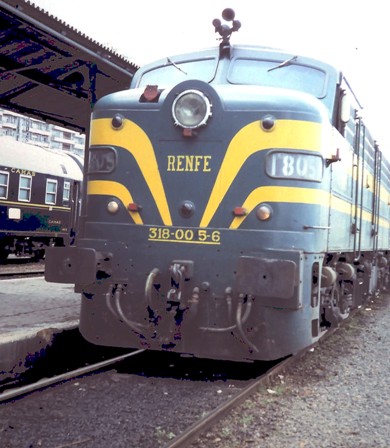
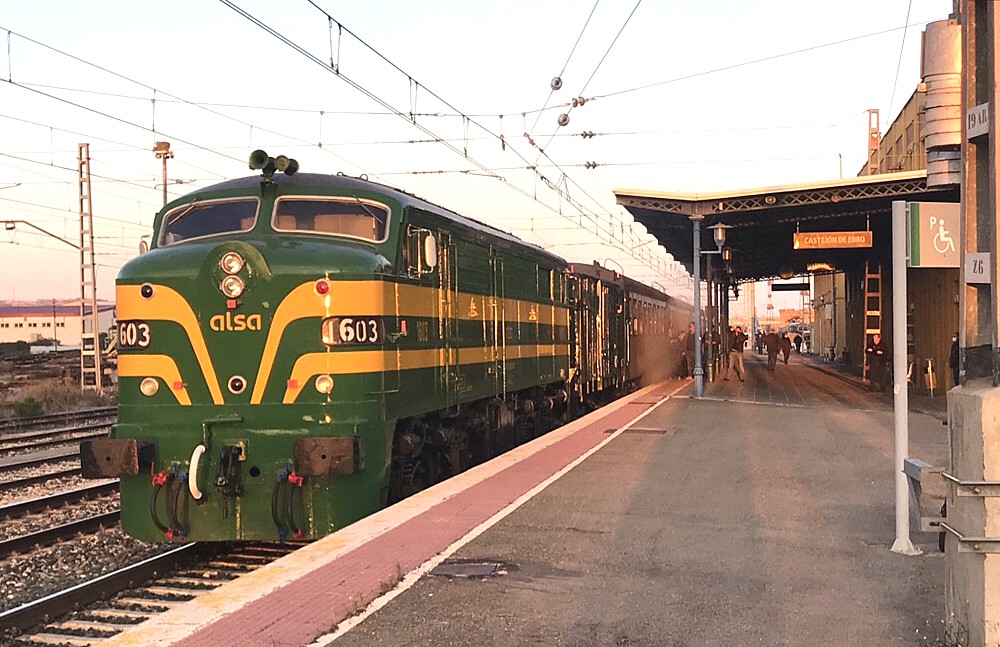
TOUR CONDITIONS PRICING - PLEASE READ CAREFULLY
Tour Pricing:
All tour prices are subject to change without notice, at any time. All prices based on double room occupancy. Those people that use a credit card for payments a 3% conveyance fee (The 3% fee has been suspended until further notice) will be added to the tour price. We reserve the right to change tour prices if necessary without prior notice.